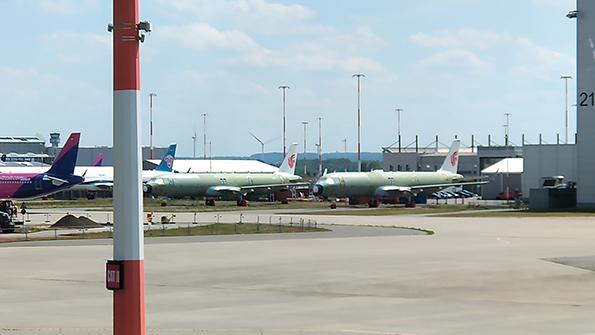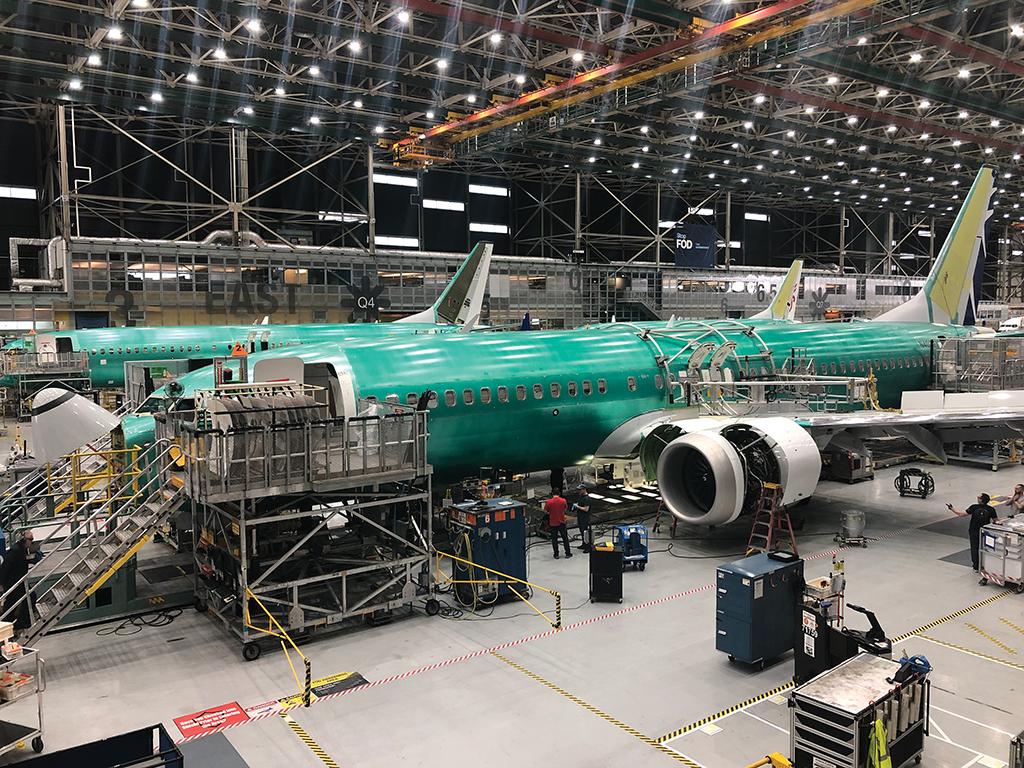Resurgent Demand Outpaces Capacity To Cope With Air Transport Comeback

Aviation executives departed into a parallel universe for a few days in June. They left for a place where private concerts by Christina Aguilera and Jennifer Lopez on two consecutive nights are possible, where open soccer stadiums in an environment with 120F heat can be cooled down to comfortable temperatures. A place where hundreds of employees of the local airline cheer when the CEO gives a speech and were given a bonus worth a monthly salary based on the high profits being made by the company. Perhaps most important, it was a universe replete with enough people to ensure normal airline and airport operations.
But when executives flew back home from the International Air Transport Association (IATA) Annual General Meeting (AGM) held June 20-21 in Doha, Qatar, they were going back to reality. In this universe, they were also going back to the enormously frustrating job of trying to handle shortages and constraints everywhere while simultaneously dealing with the astonishing consequences that by now amount to a perfect storm for the airline industry and commercial aircraft manufacturers.
- Severe powerplant delays hamper aircraft deliveries
- Airlines forced to ground aircraft for lack of spares, staff
- Maintenance backlog affects capacity buildup
Most visible for the flying public: Airports in Europe and, to a lesser extent in North America, are operating on the brink of collapse. Wait times of 5 hr. in security lines are now common at Amsterdam’s Schipol Airport. Hundreds of flights are being canceled every day because there are no pilots to fly them, no flight attendants, no check-in staff and no one at the security checkpoints. In response to these developments, airlines are ferrying empty aircraft across Europe because airports are telling them they cannot handle any additional passengers or bags.
Some airline executives at the IATA AGM were characterizing the issues as local phenomena that only affect certain airports. However, frequent travelers will confirm that it is the case everywhere in Europe, and some airlines are only slowly realizing how bad the problems really are. One major carrier, Lufthansa, denied there was a pilot shortage just a few days before the Doha event, only to backtrack and admit that flights are being canceled because of a dearth of captains or first officers.
Not so visible to the flying public is what is going on behind the scenes. The bitter truth is that the situation is at least as bad with aircraft deliveries and operations. Industry sources tell Aviation Week that aircraft manufacturers are waiting for hundreds of engines, equivalent to several months of production. To cope with the delays, Embraer is parking E170s in Sao Jose dos Campos, Brazil, while waiting for engines. Airbus is building up an impressive inventory of completed narrowbody “gliders” at its final assembly lines. It is an expensive exercise for both OEMs that should speed the delivery process once engines finally arrive.
Engines are an important part of the issues plaguing airlines and OEMs, but there are other bottlenecks. Cabin interior suppliers have fallen behind in deliveries, too, and seat manufacturers cannot deliver seats because key components for inflight entertainment systems are missing.
This all amounts to a major risk that aircraft OEMs will miss their 2022 delivery targets—although it is hard to quantify with things changing every day and many variables in play. Nevertheless, despite the current circumstances, Airbus, Boeing and Embraer have not changed their respective outlooks: Together with some already-built 737s, Boeing hopes to be able to deliver around 500 narrowbodies, Airbus is targeting an output of about 600 A320neo-family aircraft, and Embraer is planning 60-70 commercial aircraft deliveries.
The constraints are raising doubt about the planned output increases. Airbus has been delivering an average of 36 narrowbodies in the first five months of the year, but that figure should really have been closer to 50 and will have to be closer to 60 by the end of the year if it is to reach its target of 75 aircraft per month by mid-2025. Boeing has kept the 737 MAX production target at 31 per month, which it has not reached yet, according to the latest delivery figures. A decision on a further hike in Boeing rates is now expected by year-end, industry sources say.
Emirates Airline President Tim Clark says the single biggest wish he has is for the aircraft manufacturers to give him schedule “certainty.” In the near term, that will not be possible. Another senior industry source says both airlines and aircraft manufacturers are “enormously frustrated” with the engine-makers and are blaming them for making their life much harder at a crucial time. Some are pointing out that the traffic recovery has come more quickly than expected, catching the industry by surprise. Alternatively, others say it must have been obvious that the increased demand and the planned production ramp-up would lead to higher engine demand.

significantly affected Boeing but are a watch item as production ramps up. Credit: Guy Norris/AW&ST
The engine shortage not only affects aircraft waiting to be delivered. In addition to the effect on new deliveries, airlines are also grounding aircraft because spare engines are coming in late. Engine maintenance is another bottleneck that is hitting the in-service fleet as well. The more aircraft are flying, the higher maintenance demand becomes. On top of that, there is a backlog of deferred maintenance from airlines that tried to save money during the pandemic.
The engine-makers remain coy about the magnitude of the delivery shortfall, though the issue seems to be hitting the higher-rate Airbus A320neo production line hardest with slightly smaller impact on the lower-volume A220 and Boeing 737 MAX lines. CFM is the exclusive engine provider to Boeing with the Leap 1B and offers the Leap 1A in competition with Pratt & Whitney’s PW1100G geared turbofan on the A320neo. Meanwhile, Pratt is the exclusive engine provider for the A220 with the PW1500G.
CFM, which delivered 239 Leap 1 engines in the first three months of 2022, compared with 189 in the first quarter of 2021, says: “We are working diligently with our suppliers to mitigate supply chain constraints, and we are closely coordinating with our airframe partners to accelerate delivery and meet customer demand.” The engine-maker, which has final assembly lines in France and the U.S., delivered 1,736 Leap 1s and 391 CFM56-5/7s in 2019 but saw numbers slashed to just 815 Leap 1s in 2020 and 900 engines in 2021 as the COVID-19 pandemic took its toll.
The slower-than-expected ramp-up at CFM is related to a variety of issues throughout the supply chain, ranging from skilled labor shortages to a number of isolated labor disputes from earlier in the year. The problems appear to have become increasingly acute in the past four months, and reporting in May from Reuters indicates the delays have put the company 6-8 weeks behind its delivery plan. Despite the holdups, CFM—publicly at least—continues to target a ramp-up to 2,000 engine deliveries in 2023.
Many of the same skills shortage issues are also affecting the supply chain for Pratt, which delivered 119 PW1000Gs in the first quarter of this year, compared with 137 over the same period in 2021. The engine-maker, which had invested heavily in new production facilities to boost capability prior to the pandemic, managed to deliver 623 geared turbofans (GTF) in 2021, compared with 746 in 2019 and 546 in 2020, but issued a warning earlier this year that supply chain problems were on the rise.
On the company’s first-quarter earnings call in late April, Greg Hayes, CEO of Pratt parent company Raytheon Technologies, said around 70 PW1000G GTFs had moved “out of the first quarter” primarily because of delays at a structural casting supplier. “We are working with that supplier to recover and will get most of the way there by the end of the year,” Hayes said.
Pratt adds: “Like many in the industry, we have experienced supply chain challenges with structural castings and other parts, which have resulted in production engine delivery delays. We continue to work mitigation strategies with our supply base and expect pressures to begin to ease in the second half, which will support both our [original equipment] and [maintenance, repair and overhaul] output plans.”
It is not the first time in recent years that engines have become a bottleneck in aircraft manufacturing. Since 2015, engine manufacturers have scrambled to accelerate production to meet unprecedented orders for A320neos and 737 MAXs, while simultaneously building up supply chains and dealing with early in-service and quality issues. CFM, which took orders for almost 3,000 CFM56 and Leap engines in 2017, was forced to speed up production earlier than it planned and by the end of 2018 was building 20 Leap engines per week. Deliveries at the time were slowed by parts yield issues and, in the case of the Leap 1B for the 737 MAX, disrupted by inspections following the discovery in May 2017 of cracks in a batch of low-pressure turbine discs.
At the same time, Pratt was pushed into developing extra production capacity for fan blades and the assembly of additional spare engines to counter higher-than-expected removal rates. New engines in 2018 incorporated a redesigned combustor liner after earlier attempts failed to rid the PW1000G hot section of nagging durability issues. Alongside this, Pratt also instituted retrofits of improved carbon air seals in PW1100G bearing housings, among several other engine improvements for the A320neo variant.
There is a silver lining: The situation that has unfolded over the past few months, is beginning to stabilize. Delays, now around two months or more, do not appear to be worsening. But things will only get better slowly. And schedules will likely only be met by the end of the year—at the earliest—for new production, while a backlog of aircraft needs to be cleared into 2023.
—With Joe Anselmo in Washington
Editor's note: This article was updated to include further comment from Pratt & Whitney.






